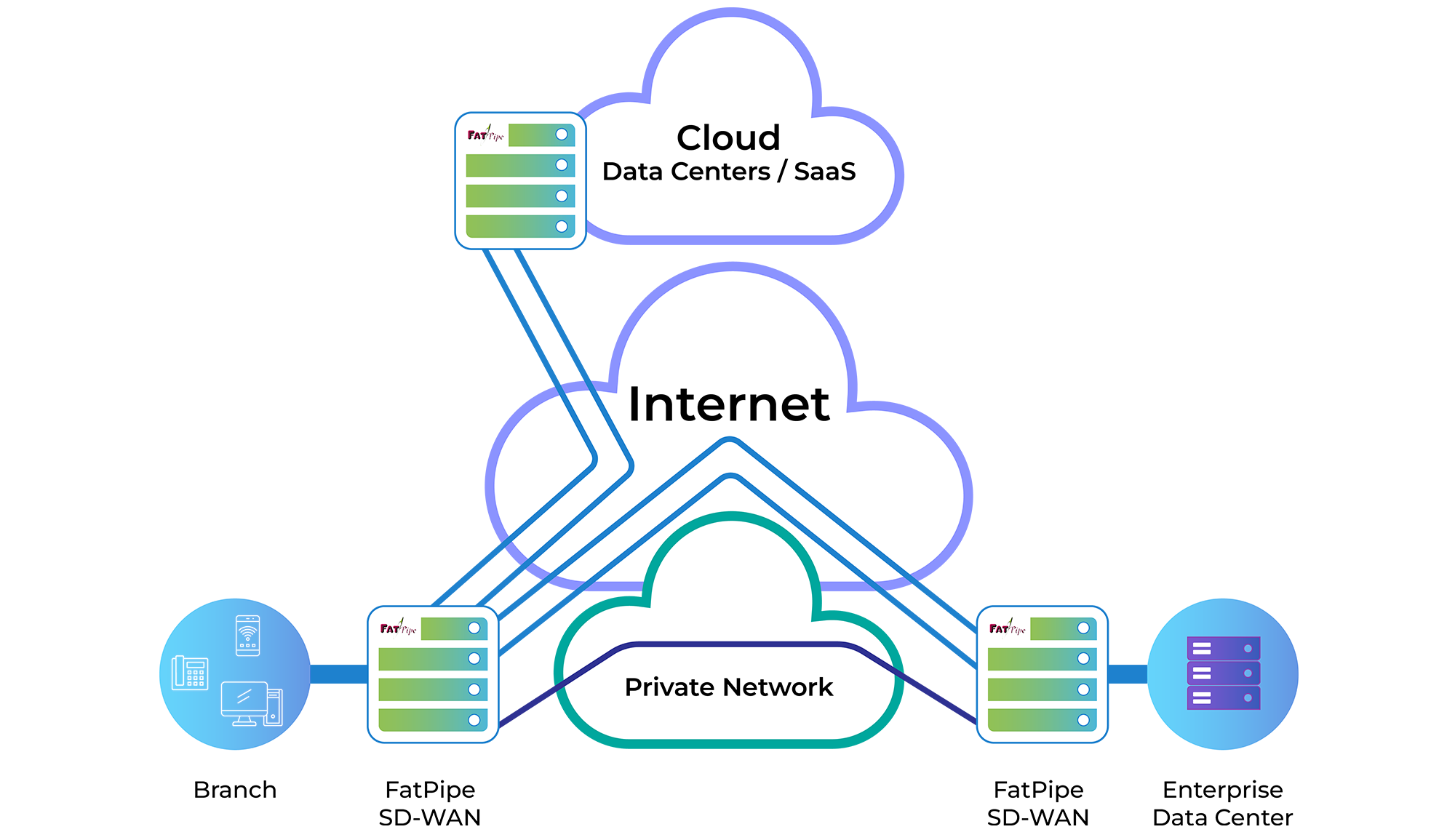
FatPipe pioneered the concept of Hybrid WAN/SD-WAN and provides great focus to SD-WAN and advanced hybrid WAN functionality. With FatPipe, you can aggregate multiple WAN links, perform load balancing for inbound and outbound traffic, perform dynamic path selection, carry out policy-based management, accelerate traffic with WAN optimization, augment last mile connectivity, eliminate the need for ISP cooperation in multi-carrier network redundancy, and have full control over your WAN links.
Organizations implement SD-WAN to establish a software-defined overlay network that operates independently of the carrier or the physical infrastructure beneath it. This network overlay is often used to improve network performance and reliability. Additionally, because a SD-WAN is independent of the underlying network, remote sites can quickly and easily be provisioned using the locally available bandwidth.
